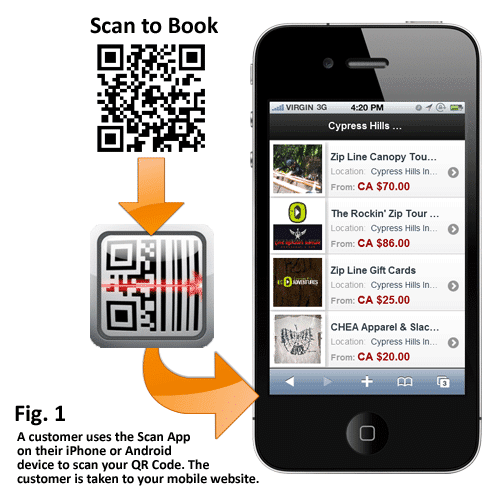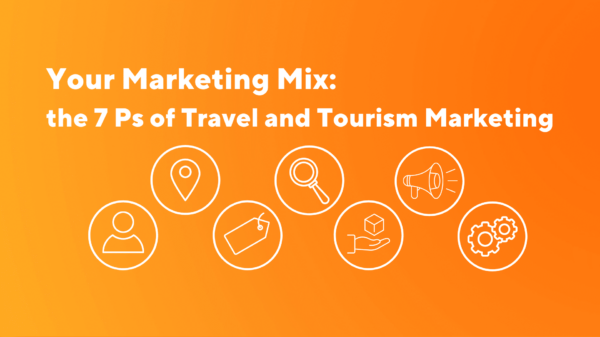
In the past, I’ve written about how to best leverage rack cards and brochures to increase bookings and track ROI. With the recent release of the Rezgo Mobile Booking Engine, I wanted to revisit in-destination marketing and provide you with some tips on how to use your brochures and rackcards to promote your tours and activities and increase your exposure and, consequently, your mobile bookings.
According to PhoCusWright research, over 30% of visitors who search for things to do in a destination use rack cards or brochures. In addition, 20%+ of visitors who are checking out your site are doing so on a mobile device. For many operators, advance bookings such as those generated through a regular website are generally made 7 to 14 days before the travel date. But a lot of operators who offer tours with limited availability still have seats available for sale the day before or even the day of the tour. This is where rack cards can be particularly powerful. If combined with a promotion that is only available on the brochure, the rack card can drive potential visitors directly to your mobile site in order to check availability and book your services.
Don’t forget a call to action
The best way to drive a customer from your rack card or brochure to your mobile booking website is to use a call to action. While they are looking at the brochure, make it easy for them to hop on to your mobile website and search for updated pricing or your schedule. This is especially true if the customer is looking at your brochure outside of regular business hours. They may want to make a booking for the next day but can’t because your regular website is not mobile friendly.
Create incentives to book right away
If you already have a customer’s attention with your brochure or rack card, give them a reason to book right away. Offering a deal that is only promoted on your brochure or rack card is a great way to drive a customer to your mobile booking website and an excellent way to actually track activity.
Use QR Codes in a meaningful way
There has been a lot of debate about just how useful QR codes are and whether people actually use them. I would argue that in many cases the QR codes are not used because there is no indication what the QR code is for. If you are going to place a QR code on your rack card or brochure for example, make sure to include a call to action and embed a promotional code in the URL that you encode in the QR code. This way when a customer scans your QR code, they are taken to your mobile booking website with the promo code already enabled. This saves the customer having to type in the promo code and provides them with promotional pricing right away. But don’t just rely on the QR Code, make sure the URL that you embed in the QR is also visible so that those customers who do not have a QR code reader can still type in the address in their mobile browser.
Track and measure results
Although rack cards and brochures are excellent for increasing awareness of your business, they can also be used to track booking sources. Work with your local destination marketing company to see if it is possible to add different promotional codes to your rack cards depending on where the card is distributed. This is a great way to determine source of bookings and the effectiveness of certain locations. If not, add a custom form field that asks where they found the rack card or brochure.
If you want your in-destination marketing and your mobile strategy to be effective, you have to make sure they are working together. When someone is looking at your brochure or rack card in their hotel or at the local tourism office, you have a small window of opportunity to convince them to take your tour or activity. By following these simple strategies you stand a better chance of converting the customer by provide them with an incentive, making it easy for them to book, and providing a high quality experience.
Do you have any suggestions on how to combine in destination marketing with mobile? Feel free to leave them in the comments.





